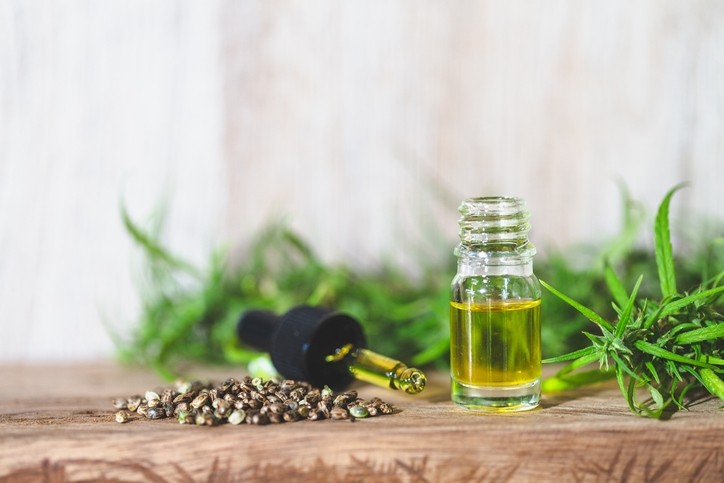CBD research progresses understanding of entourage effect

A team of researchers at the Lambert Initiative for Cannabinoid Therapeutics explored the role cannabinoids play in treating anxiety and seizures. Their research shows that hemp extracts provide high concentrations of cannabinoid acids in mice due to the pharmacokinetic entourage mechanism.
The entourage effect
There is a growing body of research exploring the idea that health benefits may be stronger when multiple compounds from the cannabis plant are present, which is known as the ‘entourage effect’.The desire to understand this effect further was very prominent in the researchers’ study. “Testing the notion of the entourage effect has been at the forefront of our minds over the last five years,” shares Jonathon Arnold, Associate Professor, Faculty of Medicine and Health at the University of Sydney.
Cannabis is a complex mixture of bioactive molecules including cannabinoids and terpenoids, so it made sense to the researchers that they might interact to produce different effects to individual constituents.
“The real challenge has been in demonstrating this entourage effect scientifically and also providing biological mechanisms through which this occurs,” notes Arnold. “The entourage effect is likely very complex and could work through a multitude of different mechanisms in the body,” Arnold adds.
Researchers at the Lambert Initiative for Cannabinoid Therapeutics posed the questions: Could there be a pharmacokinetic explanation for the entourage effect? Could the cannabis constituents interact to influence their own absorption and levels in the bloodstream?
The 'pharmacokinetic entourage' effect
The research study revealed two core findings. Firstly, that the oral administration of a hemp extract delivers much higher blood concentrations of CBDA compared to CBDA being administered as a single molecule. Secondly, the study provided a mechanism for a “pharmacokinetic entourage” effect, where THC (tetrahydrocannabinol) and CBG (cannabigerol) increased CBDA absorption in the gut via an interaction at the drug transporter BCRP (Breast Cancer Resistance Protein).
The cannabis extract delivered 14-times higher CBDA concentrations in the bloodstream when administered orally to mice. For the first time, the study details how this occurs and operates, pharmacologically.
Arnold explains these findings progress our understanding of CBD use and application in nutritional ingredients such as nutraceutical oils. We know that nutraceutical oils deliver low doses of CBD, much lower than the doses used when it is administered as a purified CBD formulation to reduce seizures in humans.
However, Arnold notes that a burning question has been how these low dose CBD products produce any therapeutic effect?
“Our data suggests that another component in these extracts, CBDA, might play a more important role than previously thought,” highlights Arnold.
‘Full-spectrum’ to promote beneficial effects of CBD
The findings are relevant for the use of “full-spectrum” hemp nutraceutical oils or CBD oils, as they show that a full-spectrum of cannabinoids provides a natural vehicle to maximise the absorption and blood levels of CBDA, compared to CBDA being delivered as a single molecule.
“This could have major significance, as CBDA has emerging medicinal properties, so CBDA might play a more important role in the suggested beneficial effects of CBD oils,” emphasizes Arnold.
As low-dose CBD products appear to reduce anxiety and act as anticonvulsant agents against seizures, preclinical research, including the current study, suggests CBDA may reduce anxiety, seizures and nausea.
“However, it is also worth noting that the cannabis extracts interfered with the delivery of other cannabinoid components like CBD and THC," Arnold adds.
“The levels in the bloodstream were higher when CBD and THC were administered as single molecules.”
The researchers hope to conduct a similar 'pharmacokinetic entourage' study in humans as well as conducting more preclinical studies to firm up the potential therapeutic properties of CBDA.
“Clinical trials would then be a logical next step if the findings are positive,” confirms Arnold.
Novel Foods regs remove products from the market
Daniel Pérez Vidal, founder of the online CBD retail platform For the Ageless, has previously told NutraIngredients that his data reveals that 70% of his customers favour full-spectrum products over other types of cannabinoid profiles.
However, with the novel foods regulations currently working to weed out products containing THC, Vidal says this will inevitably remove full spectrum products from the market. In fact, the FSA has so far only validated three companies since the novel food applications deadline passed at the end of March and those all sell isolate products.
Vidal said at the time: “We are concerned that the market runs the risk of becoming over-regulated, to the point of neutering itself in what it can offer.
“In particular, the drive towards an environment where artificial isolates become the norm. The natural and organic extracts that we have seen a great many benefiting from for years may be on the brink of disappearing.
“Making isolates the norm replaces a natural ingredient with a synthetic replacement that provides only a portion of the current benefits.”
Source: Scientific Reports
Lyndsey L. Anderson et al,
"Cannabis constituents interact at the drug efflux pump BCRP to markedly increase plasma cannabidiolic acid concentrations"






